Credit Limit in the Philippines
In the Philippines, a credit limit is the maximum amount you can borrow on a credit card or line of credit. This limit is usually determined by factors such as your income, credit score, and the lender’s policies. Managing your credit limit responsibly helps in avoiding additional fees, maintaining a healthy credit score, and ensuring that you don’t face unexpected financial strain. It’s essential to understand how this limit impacts your financial health to make informed borrowing decisions.
| Company | Loan amount | Term of Loan | Age Limit | Apply | |
|---|---|---|---|---|---|
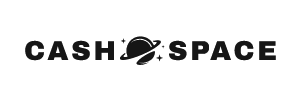 | 500 - 25000₱ | 61 days | 🆓 0% interest to new customers! | Apply for a loan | |
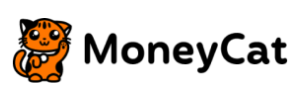 | 500 – 25000 ₱ | up to 180 days | 🆓 First loan for FREE | Apply for a loan | |
| No applications with TIN, PAGIBIG, or Postal ID | |||||
 | 1000 – 50000 ₱ | up to 365 days | 🆓 First loan free of charge | Apply for a loan | |
 | 1000 – 20000 ₱ | 61 days | 🆓 First 7 Days with 0% Interest! | Apply for a loan | |
 | 500 – 25000 ₱ | up to 365 days | 🔥 The best offer today! | Apply for a loan | |
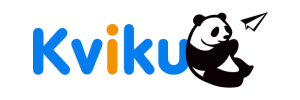 | 500 – 25000 ₱ | up to 135 days | ⏱️ Disbursed in 5 minutes | Apply for a loan | |
 | 2000 – 25000 ₱ | 62 – 360 days | 🆓 First loan for FREE | Apply for a loan | |
 | 1000 – 50000 ₱ | 🆓 First loan for FREE | Apply for a loan | ||
 | 1000 – 25000 ₱ | 91 – 365 days | ✅️ Most approved | Apply for a loan | |
 | 1000 – 25000 ₱ | up to 1800 days | Apply for a loan | ||
 | 500 - 25000 ₱ | 61 – 365 days | Apply for a loan | ||
 | 500 – 25000₱ | 91 - 180 days | Apply for a loan | ||
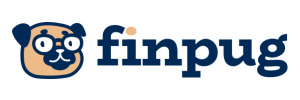 | 1000 – 25000 ₱ | 61 – 365 days | Apply for a loan | ||
 | 1000 – 50000 ₱ | 91 – 365 days | Apply for a loan | ||
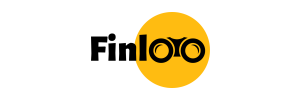 | 1000 – 25000 ₱ | 61 – 180 days | Apply for a loan | ||
 | 1,000 - 25000₱ | 61 - 120 days | 🆓 First loan for FREE | Apply for a loan | |
 | 1000 – 25000 ₱ | 62 – 120 days | Apply for a loan | ||
 | 1000 – 25000 ₱ | 61 – 120 days | 🆓 First loan for FREE | Apply for a loan | |
 | 1000 – 30000 ₱ | up to 180 days | Apply for a loan | ||
 | 1000 – 25000 ₱ | 61 days | Apply for a loan | ||
APR (annual percentage rate) can vary from 0% to 143%. The loan duration is between 62 days and 20 years. Representative example: If you borrow ₱100.000 to return in 13 weeks, you will repay ₱124.725,87 in weekly installments of ₱9.594,29 (APR 143%). This is a service to find and compare loan and credits. The conditions depend on the financial company, product, amount and loan duration.
Factors affecting credit limits
Credit limits are influenced by several factors. Understanding these can help manage your finances better. First, your credit history plays a significant role. Lenders look at your past borrowing behavior to assess risk. A strong history might lead to higher limits.
- Income level: Higher income often means higher credit limits.
- Debt-to-income ratio: Too much debt compared to your income can lower limits.
- Current credit accounts: More accounts may spread your limit thinner.
- Credit score: Better scores typically mean more credit.
Your repayment history is also vital. Consistently paying on time suggests reliability. Lastly, your relationship with the lender can impact limits. Long-term clients might receive better offers.
Managing your credit limit effectively
It’s crucial to manage your credit limit wisely to avoid financial pitfalls. Start by monitoring your spending closely. Regularly check your credit statements to keep track of purchases. This simple habit helps in identifying unnecessary expenses, and it gives you more control over your budget. Try to maintain a balance that’s less than 30% of your available credit, ensuring a healthy credit utilization ratio.
“Good financial management begins with understanding your credit behavior. It’s not just about how much you can spend, but how well you can manage your limits.”
Always pay your credit card bills on time. Late payments can harm your credit score significantly. If possible, pay more than the minimum amount due. This helps in reducing interest charges and clears off your debt quicker. Lastly, create an emergency fund. Having savings for unexpected expenses can prevent you from maxing out your credit cards.
The impact of credit limits on finances
Credit limits can significantly shape one’s financial health. A higher credit limit may provide more spending power, but it also demands greater responsibility. With more access to credit, there’s a risk of overspending, which can lead to heavy debt if not managed wisely. On the other hand, a lower credit limit encourages cautious spending within means, reducing the temptation to accumulate debt.
Understanding the potential outcomes of different credit limits is crucial. Below is a comparison of the potential financial impacts associated with varying credit limits:
| Credit Limit Range | Potential Positive Impact | Potential Negative Impact |
|---|---|---|
| ₱10,000 – ₱50,000 | Encourages moderate spending, builds credit history | Limited funds may restrict purchases |
| ₱50,001 – ₱100,000 | More purchasing flexibility, boosts credit score when managed well | Increased risk of high interest debt if not paid off |
| ₱100,001 and above | Maximizes financial flexibility, can improve credit score significantly | High risk of falling into significant debt if spending is uncontrolled |
Credit limit myths and realities
Many Filipinos often misunderstand how credit limits work. A common misconception is that having a high credit limit will automatically lead to overspending. In reality, increasing your limit can sometimes help improve your credit score, if managed wisely. When you have a higher limit, your credit utilization ratio could decrease, which may positively affect your credit rating.
“A higher credit limit doesn’t mean you must spend more, it simply offers more flexibility.”
Another myth is that once a credit limit is set, it can’t be changed. This isn’t entirely true. Credit limits can be adjusted depending on your payment history and income changes. If you consistently pay on time, you might qualify for an increase. Understanding these nuances can help you make better decisions when managing your finances.
Optimizing credit limits for future goals
Understanding how to align your credit limit with future financial plans can be a smart move. A higher credit limit can help you access funds for big life events or unexpected costs, while a lower limit might keep your spending in check. Look at your future plans—like buying a house or starting a business—and assess what kind of credit limit supports these goals.
Strategic Planning
Consider gradual increases in your credit limit if your income is stable and your spending habits are responsible. This helps build your credit profile, making it easier to qualify for loans when needed. However, make sure any increase aligns with your ability to pay back the money.
Conservative Approach
If you’re thinking long-term, sometimes a conservative credit limit works best. It minimizes temptation to overspend and keeps your financial health in check. Whichever path you choose, always monitor your spending and regularly review your credit standing to ensure it supports your future aspirations.
Understanding the role of lenders
When it comes to setting a credit limit, lenders play a crucial role. They evaluate several factors to determine how much credit to extend. One major factor is your credit score, which gives lenders an idea of how responsible you are with borrowed money. A higher score usually means a higher credit limit.
In addition, lenders look at your income level. Regular and stable income reassures them that you have the means to repay borrowed funds. Employment history can also influence decisions. Lenders prefer individuals with steady jobs, as this indicates reliability. Another factor is your debt-to-income ratio. This checks how much of your earnings go toward repaying debts. If the ratio is low, lenders might offer a larger limit.
Lastly, your past banking history is essential. Lenders examine your account records to assess your financial behavior, looking for missed payments or other red flags. Being consistent and responsible with finances helps in achieving better credit limits and terms.
Controversies around credit limit practices
Credit limits are a contentious topic, often sparking debate among financial experts and consumers alike. In the Philippines, many argue that credit limits, while designed to prevent overspending, might actually encourage it. Some believe that when people see a high available balance, they feel a false sense of wealth, leading to unplanned expenditures. This becomes a problem as soon as the next billing cycle hits, and suddenly, what felt like disposable income turns into mounting debt.
Another hot topic is the seemingly arbitrary nature of how credit limits are set by banks. Consumers often criticize the lack of transparency in this process. Some feel that despite having a strong credit score, their limits remain unjustifiably low. Others, however, with less stellar credit histories, are surprised by higher limits, leading to fears that banks prioritize immediate profits over responsible lending. Critics argue that a more informed and personalized approach might lead to healthier financial habits among borrowers.
